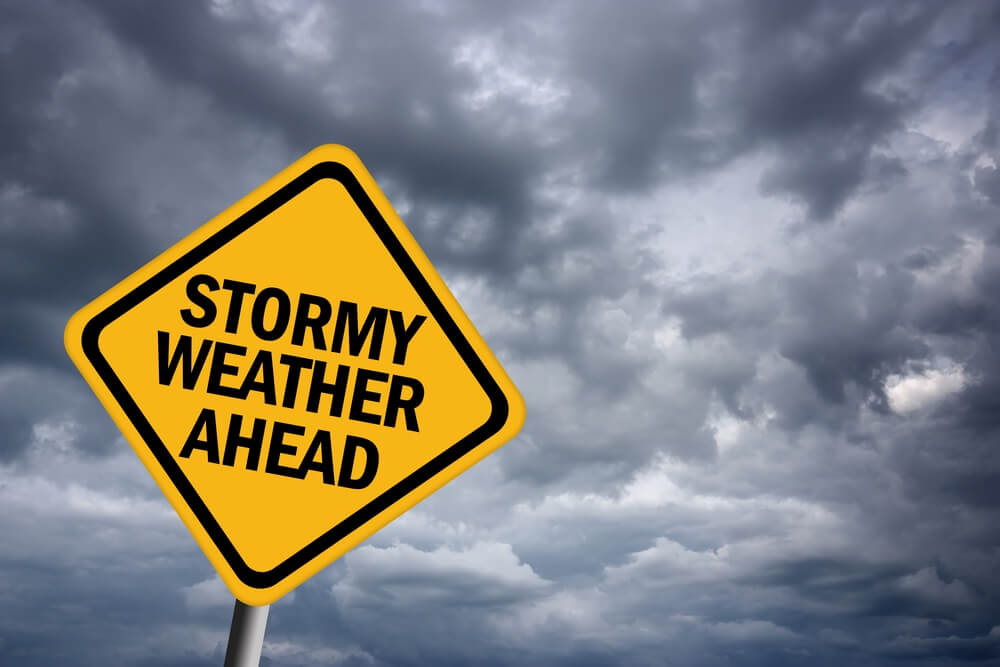When disaster strikes, controlling food safety risks is a top priority for restaurants and grocers

Catastrophic events and natural disasters can happen anywhere, at any time, and food businesses are particularly vulnerable as disruptions in power have the potential to impact the safety of food they sell to the public. Even losing power overnight during an electrical storm or grid outage can cause expensive food spoilage. Having a plan of action for unexpected events can help restaurants and food retailers mitigate losses, support their affected communities, and recover faster.
Following the widespread impact of hurricanes Irma and Harvey, thousands of food establishments across the Southeast were forced to close due to flooding and loss of electrical power. Many are still struggling to re-open as they are still without power, particularly on Florida’s West Coast where swaths of the electric grid need to be rebuilt. Moody’s Analytics expects costs of recovering from the two storms will exceed $150 billion, on par with the cost of Hurricane Katrina. Furthermore, more powerful storms are expected before the 2017 hurricane is over.
For recommendations on food safety in the aftermath of a flood, including decontamination and sanitation guidance, please see this document from the Food and Drug Administration (FDA).
For power outages, the following food safety recommendations are based on the latest guidance from the U.S. Department of Agriculture’s (USDA) Food Safety and Inspection Service (FSIS) as well as the FDA:
Prepare Before Losing Power (If Possible)
- Keep temperature monitors in refrigerators, freezers, and refrigerated display cases to ensure temperatures remain food safe during a power outage. Safe temperatures are 40°F or lower in the refrigerator, 0°F or lower in the freezer.
- Freeze water in one-quart plastic storage bags or small containers prior to a storm. These containers are small enough to fit around the food in the refrigerator and freezer to help keep food cold. Remember, water expands when it freezes, so don’t overfill the containers.
- Freeze refrigerated items, such as milk and fresh meat and poultry that you may not need immediately—this helps keep them at a safe temperature longer.
- Know where you can get dry ice or block ice.
- Have coolers on hand to keep refrigerator food cold if the power will be out for more than four hours.
- Source backup generators and refrigerated vehicles if a prolonged power outage is expected.
- Group foods together in the freezer—this ‘igloo’ effect helps the food stay cold longer.
- Stock up on shelf stable, ready-to-eat foods that do not require cooking or cooling, as well as alternate sources for water supply.
- If you and your staff are evacuating and you have food on hand, consider donating it to the local fire department, shelters, and emergency facilities.
- Back up data and secure IT systems.
What to Do Once Power Goes Out
- Keep refrigerator and freezer doors closed as much as possible. A refrigerator will keep food cold for about four hours if the door is kept closed. A full freezer will hold its temperature for about 48 hours (24 hours if half-full).
- Place meat and poultry to one side of the freezer or on a tray to prevent cross contamination of thawing juices.
- Use dry or block ice to keep the refrigerator as cold as possible during an extended power outage. Fifty pounds of dry ice should keep a fully-stocked 18-cubic-feet freezer cold for two days.
Food Safety After a Power Outage
- Check the temperature inside of your refrigerator and freezer. Discard any perishable food (such as meat, poultry, seafood, eggs or leftovers) that has been above 40°F for two hours or more.
- Check each item separately. Throw out any food that has an unusual odor, color or texture, or feels warm to the touch.
- Check frozen food for ice crystals. The food in your freezer that partially or completely thawed may be safely refrozen if it still contains ice crystals or is 40°F or below.
- Never taste a food to decide if it’s safe.
- When in doubt, throw it out.
General Emergency Preparedness
- Food businesses will want to conduct a risk assessment and choose insurance plans to cover those risks.
- Carefully evaluate internal and external operations. Determine which staff members, materials, procedures and equipment are absolutely necessary for the business to keep operating.
- Consider temporary waste management procedures in case regular removal services are compromised or delayed. Consult professional pest removal services before reopening.
- Consider what size and type of generator your facility would need in the event of a sustained power outage. It’s also important to ensure that your staff understand how to use the equipment, as unsafe practices could shut your business down even if the storm doesn’t. Every year, people die from carbon monoxide poisoning after running their gas-powered generators inside their homes or businesses.
- Determine how you will be in contact with employees, customers, local officials, vendors, and others during and after a disaster. Make sure you have management and benefit contact information available.
All disasters are unique and present unique challenges. Building strong relationships between food protection stakeholders prior to an emergency can be key to safe operation after a disaster. Agencies such as the Federal Emergency Management Agency (FEMA), Centers for Disease Control (CDC), and the U.S. Environmental Protection Agency (EPA), as well as non-profit organizations such as the Red Cross, have information and resources concerning food safety emergency response plans. The faster that establishments can get back on their feet, the quicker they can begin preparing food for the community and those responding to assist in the recovery.
Gain Control Today
Achieve operations efficiency and food safety compliance with our simple, intuitive solution.
Learn More